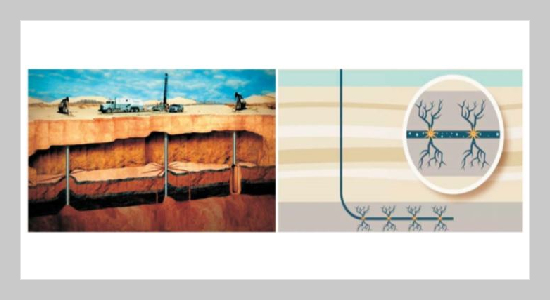REFERENCES
- [1] Wang, L., L. Zhang, and J. J. Li (2013) The research of perforation parameter and fracture stress of horizontal wells, Journal of Chongqing University of Science and Technology 15(5), 57�60. doi: 10.3969/j.issn.1673-1980.2013.05.016
- [2] Sui, L. L., Y. Yang, Y. Ju, et al. (2014) Fractal description of rock fracture behavior, Mechanics in Engineering 36(6), 753�756. doi: 10.6052/1000-0879-14-025
- [3] Zhang, T., Y. B. Wang, G. J. Hu, et al. (2010) Effect of Perforation Parameterson HydraulicFracturing, Drilling & Production Technical 33(2), 44�48. doi: 10.3969/j.issn.1006-768X.2010.02.014
- [4] Hossian, M. M., M. K. Rahman, S. S. Rahman, et al. (2000) Hydraulic fracturing initiation and propagation: Roles of wellbore trajectory, perforation and stress regimes, Journal of Petroleum Science and Engineering 27(32), 129�149. doi: 10.1016/S0920-4105(00)00056-5
- [5] Biao, F., H. Liu, J. Zhang, et al. (2011) A numerical study of fracture initiation pressure under helical perforation conditions, Journal of University of Science and Technology of China 41(3), 219�226. doi: 10.3969/j.issn.0253-2778.2011.03.006
- [6] Behrmann, L. A., and J. L. Elbel (1991) Effect of perforation on fracture initiations, Journal of Petroleum Technology 43(5), 608�615. doi: 10.2118/20661-PA
- [7] Yao, T. Y., M. Wang, W. Zhu, et al. (2011) Analysis of two-phase percolation of fractured horizontal wells in low-permeability oil reservoirs, Mechanics in Engineering 32(1), 66�696. doi: 1000-0992-lxysj2010069
- [8] Liu, H., Z. X. Lan, S. L. Wang, J. G. Xu, et al. (2015) Hydraulic fracture initiation mechanism in the definite plane perforating technology of horizontal well, Petroleum Exploration and Development 42(6), 794�800. doi: 10.11698/PED.2015.06.13
- [9] Zhang, G. M., H. Liu, J. Zhang, et al. (2011) Three-dimensional finite element numerical simulation of horizontal well hydraulic fracturing, Engineering Mechanics 28(2), 1011�106. doi: 10.1016/j.petrol.2010.03.032
- [10] Shan, Q. L., Y. Jin, L. Han, et al. (2017) Influence of spiral perforation parameters on fracture geometry near horizontal, Petroleum Science Bulletin 2(1), 44� 52. doi: 10.3969/j.issn.2096-1693.2017.01.005
- [11] Chen, J. B., B. Wei, and H. Q. Wang (2017) Influence of directional perforation parameters on fracture propagation, Fault-Block Oil and Gas Field 24(3), 391� 395. doi: 10.6056/dkyqt201703021
- [12] Liu, H., F. Wang, Y. Wang, et al. (2014) Oil well perforation technology: Status and prospects, Petroleum Exploration and Development 41(6), 731�737. doi: 10.11698/PED.2014.06.13
- [13] Gao, Y., H. Liu, L. Wang, et al. (2015) The application of face direction perforation in unconventional reservoirs, SPE Asia Pacific Oil & Gas Conference and Exhibition, Nusa Dua, Bali Indonesia, Oct. 20�22. doi:10.2118/176404-ms
- [14] Megorden, M. P., J. Hui, P. J. D. Bentley, et al. (2013) Improving hydraulic fracture geometry by directional drilling in coal seam gas formation, SPE Unconventional Resources Conference and Exhibition, Brisbane, Australia, Nov. 11�13. doi: 10.2118/167053-ms









